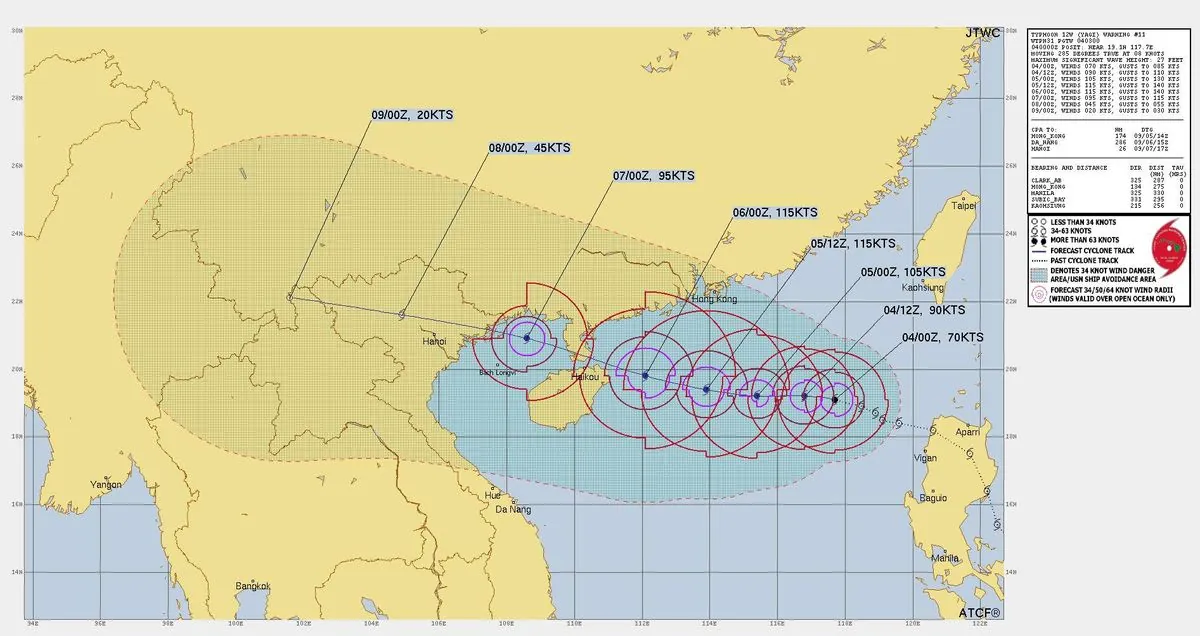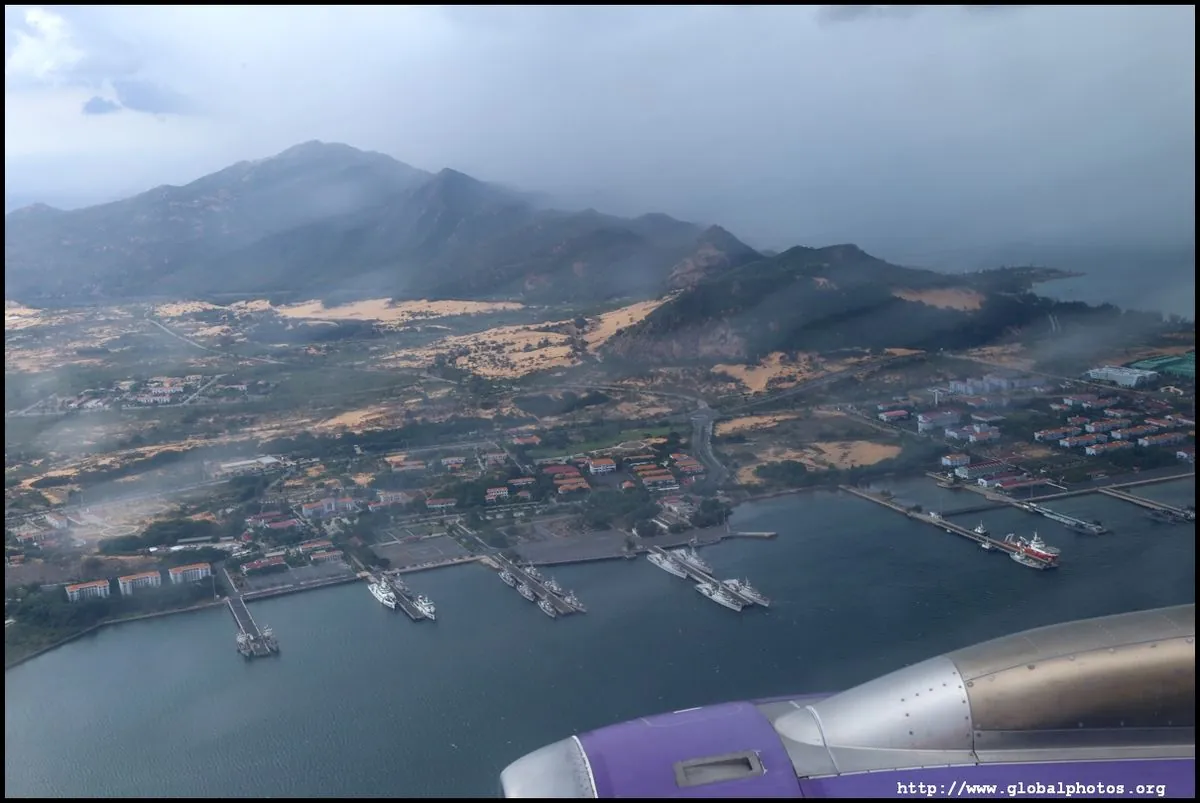Super Typhoon Yagi Threatens Southern China: Massive Preparations Underway
Southern China braces for Super Typhoon Yagi, potentially the strongest storm in a decade. Coastal regions implement extensive precautions, shutting down schools, transportation, and businesses ahead of expected landfall.

As of September 5, 2024, southern China is on high alert as Super Typhoon Yagi approaches, prompting extensive preparations across coastal regions. This powerful storm, potentially the most intense to hit the area in nearly ten years, is causing significant disruptions to daily life and commerce.
Yagi, whose name originates from the Chinese term "大风" (dàfēng) meaning "great wind", intensified to super typhoon status on September 4. The China Meteorological Administration reports that the storm is currently located approximately 610 kilometers southeast of Xuwen County in Guangdong Province. With sustained winds exceeding 150 mph (240 km/h), Yagi fits the criteria for a super typhoon, highlighting the severity of the threat.
The typhoon is projected to make landfall between Qionghai in Hainan and Dianbai in Guangdong on September 6. Authorities expect Yagi to bring torrential rains and powerful winds to these areas, posing significant risks to local populations and infrastructure.
In response to the impending danger, local governments have implemented a series of precautionary measures:
- Schools across southern China, including in Hong Kong and Macau, have been closed.
- Transportation services, including trains and boats in Hainan, have suspended operations.
- Haikou airport has cancelled all inbound and outbound flights from 8 PM on September 5 until midnight on September 6.
- Coastal tourist attractions and beaches have been closed to ensure public safety.

The approach of Super Typhoon Yagi is particularly noteworthy for Hainan Island, China's southernmost and smallest province. Historical data from 1949 to 2023 shows that while 106 typhoons have made landfall on Hainan, only nine were classified as super typhoons. This rarity underscores the potential unprecedented impact of Yagi on the island, often referred to as the "Hawaii of China" due to its tropical climate.
Hong Kong, one of the world's most densely populated regions, is considering issuing its third-highest typhoon signal. This action would result in the closure of many businesses and a significant reduction in transportation services across the special administrative region. The Hong Kong Observatory, established in 1883 to monitor typhoons, plays a crucial role in issuing these warnings.
Guangdong Province, China's most populous region with over 126 million inhabitants and a major manufacturing hub, is also preparing for Yagi's impact. The province's extensive coastline and economic importance make it particularly vulnerable to the effects of the super typhoon.
It's important to note that Yagi has already caused significant damage in its path. Earlier this week, at least 13 fatalities were reported in the Philippines, a country that experiences an average of 20 typhoons annually.
As southern China braces for Yagi's arrival, it's worth considering the broader context of typhoons in East Asia. These powerful storms are the most costly natural disasters in the region, and their intensity is expected to increase due to climate change. The South China Sea, where many typhoons form, is also a disputed territory, adding geopolitical complexity to disaster response efforts.
China's four-tier color-coded weather warning system is currently in full use as authorities work to mitigate the potential impact of Super Typhoon Yagi. As the storm approaches, residents and officials alike are hoping for the best while preparing for what could be a historic weather event in southern China.


































